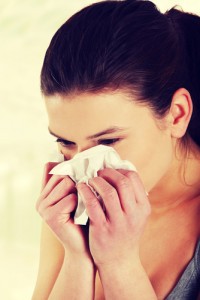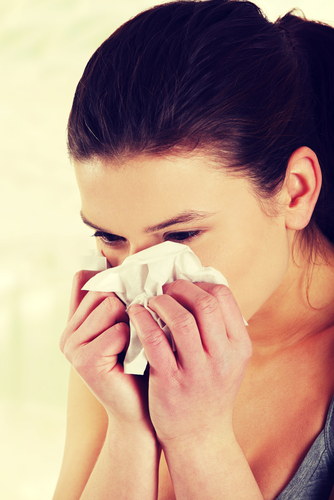 Researchers at the University of South Carolina have been awarded two patents for a new method to eliminate allergens and other asthma causes from carpets, mattresses and other furniture.
Researchers at the University of South Carolina have been awarded two patents for a new method to eliminate allergens and other asthma causes from carpets, mattresses and other furniture.
CarboNix LLC, a USC Columbia-based, early-stage company, has been awarded a second Small Business Innovative Research (SBIR) grant for $128,819 to support its “Allergens and Induced Asthma: Eradicating Indoor Allergens and Dust Mites” research project
The grant is from the National Institute of Environmental Health Sciences, a component of the National Institutes of Health (NIH), and aimed at further development of the CarboNix technology for reducing or eliminating indoor allergens that trigger both severe allergies and often asthma. Funding from the National Institute of Biomedical Imaging and Bioengineering has focused on development of novel technology for sterilization and disinfection of synthetic and natural biomaterials.
The project was designed to provide proof-of-concept for CarboNix’ proprietary process that reduces dust mites and their allergens in carpeting and similar textile items and the founders hope it will lead to the commercialization of a new service business for killing dust mites in the home and preventing re-infestation. The research could benefit any allergy sufferer, but is specifically aimed at minority and low-income children who are six times more likely to die from dust mite allergen-induced asthma.
CarboNix LLC was founded by Allan M. Quick who is also a member of the USC College of Engineering Partnership Board, and Dr. Michael A. Matthews and incorporated June 2006 in the State of South Carolina. CarboNix LLC’s mission is to develop and commercialize environmentally-clean and safe technology using carbon dioxide (CO2) to “freeze clean” home fabrics for destruction of infectious agents and abatement of indoor allergens.
Dr. Matthews’s research group applies principles of thermodynamics, transport phenomena, and kinetics with a view toward more green and sustainable methods of chemical and material manufacturing.
Dr. Matthews, Mr. Quick, Jian Zhang, and fellow researchers at USC have developed a process utilizing CO2 vapor sprayed directly on fabric to “freeze clean” home fabrics, according to the release. Micro-pellets of dry ice are formed when the vapor cools, which are vacuumed, leaving a dry fabric free of allergy-causing agents. One cleaning treatment can last up to 6 months, with no harm to the fabric, according to the release.The method could be ordered by physicians as an intervention for children with asthma, The company is commercializing this technology, which is licensed from the South Carolina Research Foundation. This technology broadly pertains to cleaning and medical sterilization processes using non-toxic, environmentally friendly solvents.
A USC release notes that certain research findings have resulted in intellectual property concerning this sterilization technique that works at room temperature and without harsh chemicals, citing research showing that bacteria, especially certain difficult-to-kill bacterial spores, can be effectively eradicated at room temperature using a bath of the non-toxic environmentally friendly solvents at high pressure and small amounts of other sterilizing chemicals such as hydrogen peroxide (which is usually well-tolerated by allergic and chemically sensitive individuals). Additional findings have resulted in development of intellectual property on a proprietary process whereby certain allergy causing substances can be denatured or deactivated. Laboratory results show that 80 to 90 percent of offensive proteins can be denatured with a single sterilization/cleaning.
Infections acquired in health-care facilities are estimated to infect over 2 million people a year in the U.S., and may cause 48,000 deaths annually. Such nosocomial infections also may account for as much as 1 percent of total of health care expenditures — approximately $8 billion, and there is increasing incidence of community-acquired infections being reported, such as Methicillin-resistant Staph Aureus. Certain developing technologies, such as tissue-engineered products and human-derived biologic products, are expected to increase risk of such infections. Consequently, new sterilization and disinfection technologies and techniques will be required that are safe, low-energy, and compatible with sensitive biological materials and sophisticated invasive medical devices.
Allergies and allergy-induced asthma are also major health problems for Americans. According to USC, more than 50 million Americans suffer from allergies, which they note are now the sixth leading cause of chronic disease in the United States.
About 7 million children, more than 9 percent of the entire child population in the U.S., suffer from asthma, according to the Centers for Disease Control. Asthma rates are even higher for minority and low-income children and asthma attacks also are responsible for 1.8 million emergency room visits each year.
Asthma can be fatal and it is especially critical in children under age 13, and asthma and allergies are more prevalent in low-income and minority homes. It is estimated that allergies cause 3.8 million lost work or school days per year. These allergens can cause three major diseases: asthma, perennial rhinitis, and atopic dermatitis. The consequences sometimes are fatal. USC cites a nationwide survey reporting that more that 84 percent of U.S. homes have detectable levels of mite allergens; and about half of homes have allergen levels sufficient to trigger allergic reactions, while a quarter of homes have sufficient allergen levels to cause asthma.
The American Lung Association estimates that 32.5 million Americans (11.2%) have been diagnosed with asthma, and 6.2 million of these are children between 5 and 17. It has been shown that most children with exacerbation of asthma have been exposed to high levels of indoor allergens, and that continuous exposure can result in readmission.
According to the National Center for Health Statistics, prevalence of asthma in minority (specifically African American and Puerto Rican) children is 40% higher than in white children. Clinicians often employ a multiple-intervention strategy for allergy and asthma management. The new business will give practicing clinicians a new interventional tool, namely the safe and inexpensive cleaning of allergen-laden household items.
The particular mission of CarboNix LLC is the clinically effective abatement of a broad spectrum of household allergens that collect in bedding and other items and fabric materials. Allergen avoidance is recognized as an important strategy in mitigating allergic and asthma attacks in many (but not all) sensitized individuals.
 “Our original concept … was to commercialize carbon dioxide [CO2] technology for medical sterilization,” comments Dr. Matthews, a Texas A&M University alumnus who is a Professor of Chemical Engineering, Associate Dean for Research and Graduate Education,
“Our original concept … was to commercialize carbon dioxide [CO2] technology for medical sterilization,” comments Dr. Matthews, a Texas A&M University alumnus who is a Professor of Chemical Engineering, Associate Dean for Research and Graduate Education,
Adjunct Professor of Orthopedic Surgery at the University of South Carolina’s College of Engineering and Computing, and a Fellow of the American Chemical Society, in a media release. “However, we realized that there was a critical national need to address the removal of asthma triggers from the home. These triggers, which are actually proteins produced by pets and pests, can be removed with our technology.”
“The process deactivates proteins found in pet dander and can remove smoke residue and other allergy-causing substances,” the release said. “The freezing process also kills dust mites embedded in carpets and mattresses … and are a major cause of asthma,” Dr. Matthews continues, noting “Our original concept, both in research and in our startup, was to commercialize carbon dioxide technology for medical sterilization. However, we realized that there was a critical national need to address the removal of asthma triggers from the home. These triggers, which are actually proteins produced by pets and pests, can be removed with our technology.”
Patents for new method to rid carpets and mattresses to reduce asthma (Methods and Compositions for Eliminating Allergens and Allergen-Producing Organisms) were published on May 28, 2014.
Sources:
University of South Carolina
USC College of Engineering and Computing
CarboNix LLC

